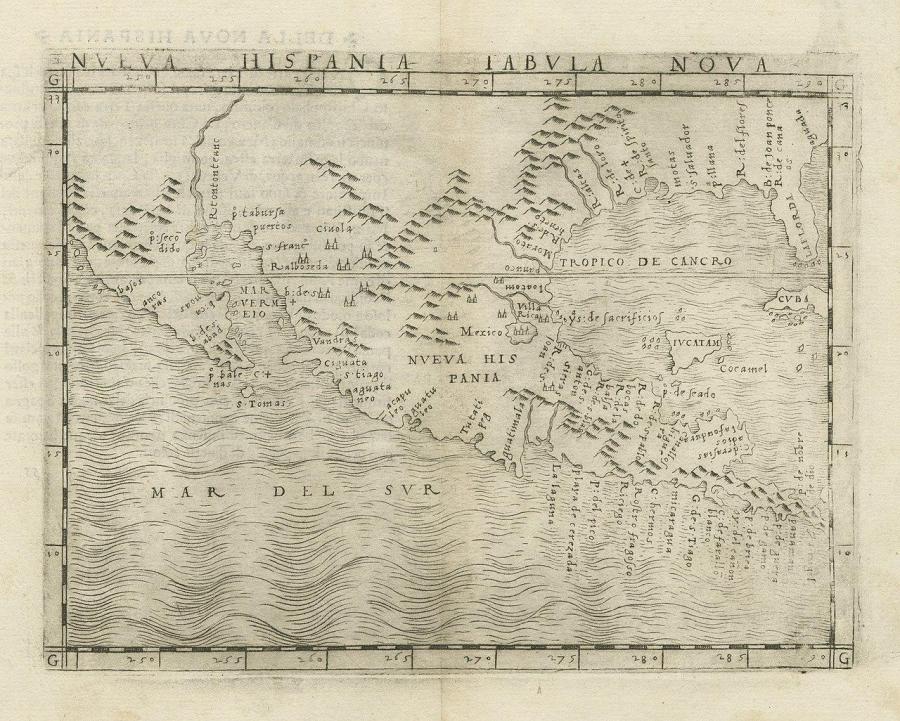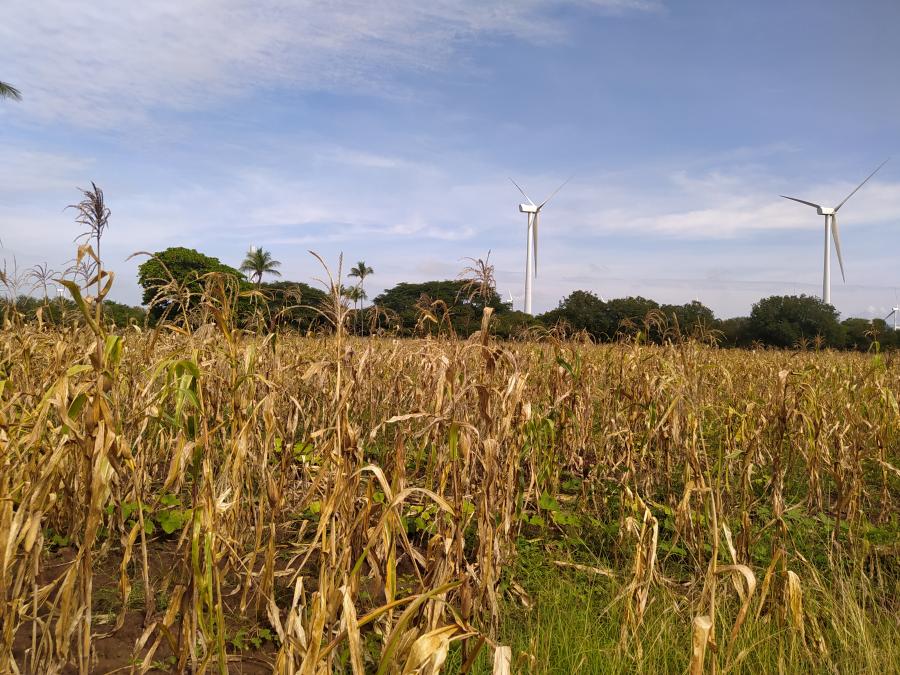A Land of Contrasts and Contradictions
The state of Oaxaca is a microcosm of Mexico's breathtaking contrasts and startling contradictions. Its 95,364 km² encompass rugged mountain chains, expansive valleys, and broad coastal plains; most of the three million inhabitants are tillers of the soil involved in a variety of production forms (from growing subsistence crops to grown cash crops with wage labor); but there is a burgeoning population of town and city dwellers as well. Oaxaca City, the state's capital, has grown fourfold since 1950 to a population of nearly 200,000; the bulk of migrants have come from rural areas. Rural-to-urban migration reflects a variety of push-pull factors, but widespread rural poverty is the most important push factor. Indeed 1.5 million Oaxacans from 15 to 65 emigrated from the state since 1960, with nearly half leaving between 1975 and 1980. This emigration signifies a decrease in the economically active population.
Paradoxically, as labor emigrates from the state, sophisticated, capital-intensive industrialization - petroleum refining - has moved in. For the most part, however, both agriculture and industry remain labor-intensive, with capital either absent or operative on only a small scale. Enclave industries, like petroleum refining, do not employ many people and their profits leave the state. A consequence of the "big industry" development is the neglect of "small industry."
For all of its social and economic diversity, Oaxaca still has the appearance of a "living museum" of the traditional, provincial way of life. The 350 mile journey from Mexico City south to the Oaxaca Valley evokes the impression of traveling "folkward." In addition to the "peasantness" of the countryside, this perception is heightened by the apparent "Indian-ness" of many of the peasants. Indeed, today's speakers of Nahuatl represent only a fraction of the Oaxacans who speak a total of 14 additional indigenous languages. In 1970, 40% of Oaxaca's population over five years of age spoke one of 15 indigenous languages; and 30% of these indigenous speakers were monolingual.
Limitations of the 'Culturalist' Approach to Crafts in Oaxaca
The persistence of indigenous languages should be no more construed as an indicator of "traditional Indian-ness" than the presence of craft production. The languages have only limited connections with wider cultural systems or prehistoric cultural traditions. They have little social or political significance regionally or nationally.
Just as ethnicity should be used only selectively in analyzing social process in contemporary rural Oaxaca, so should a narrow cultural or aesthetic approach which reifies artistic qualities and downplays or ignores economic and social contexts to craft production be avoided. A broader concept of craft production is in order, one that considers all producers of nonagricultural commodities - whether utilitarian or luxury, decorative or not to be skilled laborers and to be craft producers. Accordingly, the brickmaker, the fiber processor and rope maker, and the stoneworker are "artisans" or "craftsmen" together with the most accomplished weaver, embroiderer, or potter.
This approach emphasizes not the qualitative aspects of artisan products but rather the industrial form of labor organization within the community-based division of labor (in the Oaxaca Valley), as well as the fact that products are produced primarily for sale.
Rural Industry in the Oaxaca Valley(1)
The Oaxaca Valley has 256 settlements with a total of half a million inhabitants; since pre-Hispanic times communities have been specialized producers of commodities (e.g., metates in Teitipac, woven products in Teotitlan del Valle, pottery in Atzompa, wooden spoons in Santa Cecilia Jalieza). In other cases, commodity production in some communities is more recent (e.g., brick making in Santa Lucia del Camino, metate production in Magdalena Ocotlan, embroidery in many villages in Ocotlan and Tlacolula, treadle-loom weaving in Xaaga), or has assumed new forms (e.g., treadle loom weaving largely displacing backstrap loom weaving in Mitla).
Today, the most prominent rural industries are treadle and backstrap loom weaving, pottery, embroidery, palm weaving, basketry, rope-making, brickmaking, and mescal distilling; several lesser industries include woodcarving, broom-making, lime extraction and processing, stone quarrying and metatemaking, and thread-spinning. Most of these industries involve both sexes and all ages. They employ family and hired labor, and utilize different forms and scales of production organization (e.g., households with one or more family workers, independent household workshops with family workers and hired workers, putting-out units comprised of a workshop plus out-worker households). They also differ with regard to the level of investment in tools and equipment, length of production cycle, and level of net earnings.
An important difference between these industries is the market for the commodities produced. Weaving and embroidery industries produce "neo-traditional" luxury commodities for urban tourists. Here the most complex and exploitative forms of production (i.e., workshops and putting-out units) tend to predominate. The "creative destruction" of capitalist accumulation in the neocolonial metropolis destroys handicraft production there through its competitiveness and economies of scale (which favor big industry and ruin small industry). As nostalgia for the "good old days" spreads among subsequent generations of the petty bourgeoisie a demand springs up for handicrafts which, of course, are produced mostly in the Third World where the "old ways" live on and labor is cheap and abundant.
Meanwhile, some national and foreign urbanites satisfy their cravings for handicrafts (which reinforce their conceptions of provincial, rural life). Others either decry the adulteration of "mass produced" handicrafts or make a career trafficking in them. Producers are thus admired for their "traditional" artistry and "Indian" ancestry while, at the same time, they are accused of adulterating their artistic heritage.
Palm weaving, rope-making, and metate making industries provide traditional commodities to rural households. Here the independent household without hired laborers predominates.
There are industries which don't fit easily into either group. The brick industry, for example, serves the urban construction sector, while production is undertaken by such diverse entities as individual households without hired workers and enterprises that include several brickyards, kilns, and flatbed trucks and have many hired workers.
By contrast, the woodcarving industry in Santa Cecilia Jalieza produces utensils for sale to other rural households, as well as certain luxury items (e.g., letter openers) for sale to tourists. Once again, the independent household unit without hired workers predominates.
Finally, basket makers produce products for local, regional and international markets. The household is the prevailing production unit but it is often dependent for materials or markets on merchants who specialize in exports.
The Mercantile Scissors
Like the mythical figure of popular discourse, Juan Garabato, small producer in Oaxaca, buys "dear" and sells "cheap". Rural industrialists buy raw materials at inflated prices and sell commodities for rockbottom returns. The treadle-loom weavers of Xaaga illustrate these "mercantile scissors" vividly. While the weavers must purchase large amounts of cotton thread each week, the Mitla merchants who buy their products often defer payment. When cash is available, some weavers travel to Oaxaca City to purchase several weeks' supply of thread at "wholesale" prices. These prices are set by a few businesses with exclusive factory distributorships. Some weavers traveled to the thread factories in the Tlaxcala-Puebla area to purchase several months' supply at factory prices, but the factories refused to sell them thread, indicating that the quantities desired were too small. So the Xaaga weavers continue to buy thread as before at steadily rising prices.
Weavers and most other artisans cannot increase the prices of their commodities without the consent of the "putting-out" or "buying-up" merchants who control access to the market. Even the most ambitious, businesslike, and intelligent of the Xaaga weaver-employers are dependent upon the Mitla merchants. While the Xaaga weavers express resentment against the "middlemen who are dedicated to living off the artisans," they tend to view the profits of the Mitla traders as just rewards for their marketing skills and risks. And, while they realize that establishing a producers' organization might enhance their bargaining power with the Mitla traders, they still harbor dreams of emulating the Mitlenos through individual enterprise and hard work.
Agriculture, Family, and Rural Industry
While most villages have households that produce industrial products, in some areas nearly all families are involved. In two villages known for palm weaving, for example, 97% of all households earn some income through the activity. The majority of these households were also engaged in agriculture but nearly one-fourth of the industrial households were not. Some of these households have moved to villages or towns, but a larger number have been incorporated into the ranks of a growing rural industrial proletariat.
Most landowning families have only small areas, minifundias; some 80% of the landed households possess 3.0 hectares or less of arable land. Thus most households produce only half of the corn they consume annually. Nevertheless, increased agricultural production is accompanied by increased industrial production in most households. This contradicts the belief that rural industrial production intensifies as impoverishment increases, thus representing the last resort of the impoverished households.
Finally, larger families have certain advantages in this labor-intensive economy. Unpaid family labor makes a very significant, indeed, a crucial contribution to household income, especially in households with five or more, where it accounts for roughly 1/3 of all labor performed by working members of the household, increasing their capacity for capital accumulation.
Family Labor, Accumulation, and Social Differentiation
Rural industries of the Oaxaca Valley depend upon subsidies from the workers, family or additional activities; they are not paid enough to feed, clothe and house themselves. An industry in which lower than subsistence wages prevail is embroidery. Embroiderers, piece-rate out-workers for merchants, earn an average hourly wage of about 8 cents. While much of the work is done by young, dependent, unmarried, and childless females, a majority of embroiderers are married and have children. In one village about 21 hours weekly was spent on embroidery per household or 12.5 hours per embroiderer. The highest hourly return was 25 cents and the lowest only 3 cents. Yet each household has an average of 75 cents invested in simple tools which must be replaced and more than half of them regularly supply their own thread at an average monthly cost of $1.33. One wonders how they survive. The answer is that they don't, at least from their income as embroidery outworkers. Their wages provide a cash supplement to total household income.
The brick industry exemplifies how cooperation by household members enhances the owner's productivity. The typical brickyard worker earns a weekly piece-rate wage averaging $53. Many receive rent-free housing. The worker is assisted by his wife and children who are a captive labor force. Thus, the weekly wage (per 1,000 bricks) is a payment for the family as well.
The treadle-loom weaving industry depends upon the unpaid labor of the household. Net profits are contingent upon this labor. Households earn most money as loom operators and seamstresses. Household labor remains significant even in enterprises which employ hired labor.
By not paying wages to family members and paying only meager wages to laborers, several household enterprises have grown considerably since 1975. For example, in 1977 one household weaving firm had only a single loom representing assets of $220. By 1979 the same firm had five looms, two sewing machines and four employees with assets valued at $1,200. In 1980, the same firm purchased a pickup truck for $2,200 from savings.
Small industrial enterprises do not always lead to expanded production. Depending more on family labor or hired labor can vary over time. Without exception, however, brick and weaving industries are dependent upon the availability of cheap or dependent labor. Yet, even so, small industries may improve over time the material conditions of the rural labor force.
Article copyright Cultural Survival, Inc.



